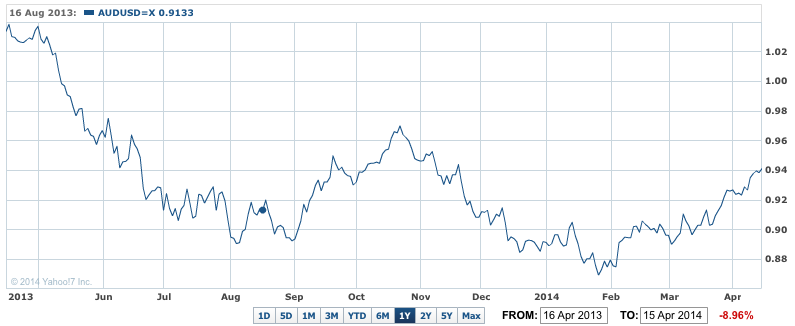The Reserve Bank has bewailed the impact of the stubbornly high Australian dollar on economic growth, which is helping make the transition from the mining investment boom much harder than it should be.
And to make sure the transition is made less difficult, the bank has again made clear it will be keeping interest rates low – around the current level of 2.5% for the cash rate – for as long as possible. The restatement of its sit-and-wait policy is aimed at all those eager beavers in the markets who blithely assume the central bank won’t be maintaining its current stance for much longer.
Some economists and others have been claiming a rate rise will be soon needed to cool the expanding housing sector.
In fact minutes should help erase all the emerging ‘rate rise looms’ calls that have followed the improving tone of recent figures on retail sales, car sales, house prices, home loan and building approvals and the labor market, not to mention exports.
But that didn’t stop some of the sillier economists from keeping the rate rise looms line going yesterday by pointing to the release a week today of the March quarter Consumer Price Index.
They ignored a clear sign in the minutes that the bank is looking through the inflation data at the moment – not ignoring it, but not using it as the justification for tightening monetary policy (which would lift the dollar’s value).
These needless comments on a possible rate rise are partly why the dollar has edged higher in the last six weeks to two months – hitting a recent high last week of more than 94.60 USc.
It eased yesterday in the wake of the minutes being released, dipping back under 94c and staying there.
AUDUSD 1Y – RBA’s stronger dollar concerns return

The minutes of its bank’s April meeting show board members discussed the dollar and its renewed strength at some length (judging by the amount of space given to the subject in the minutes).
"Members noted that the exchange rate remained high by historical standards," the minutes read.
That was "Despite commodity prices falling further over the past month, the exchange rate had appreciated a little further.
"While the decline in the exchange rate from its highs a year earlier would assist in achieving balanced growth in the economy, this would be less so than previously expected given the rise in the exchange rate over the past few months.
"On the basis of this assessment, the Board’s judgement was that monetary policy was appropriately configured to foster sustainable growth in demand and inflation outcomes consistent with the 2–3 per cent inflation target.
"The Board would continue to monitor developments in the economy, with members noting that, on present indications, the most prudent course was likely to be a period of stability in interest rates," the minutes concluded in deciding to maintain the cash rate at 2.5%."
The RBA minutes repeated comments made previously this year that there were "early promising signs" in other parts of the economy.
‘‘A strong pick-up in dwelling investment was in prospect and there was some evidence that consumer demand had strengthened a little,’’ the RBA said.
‘‘Indicators for exports remained strong, while those for business conditions were generally higher than they had been in 2013.’’
But no real concern expressed in the minutes about those claims the housing market is showing signs of overheating.













